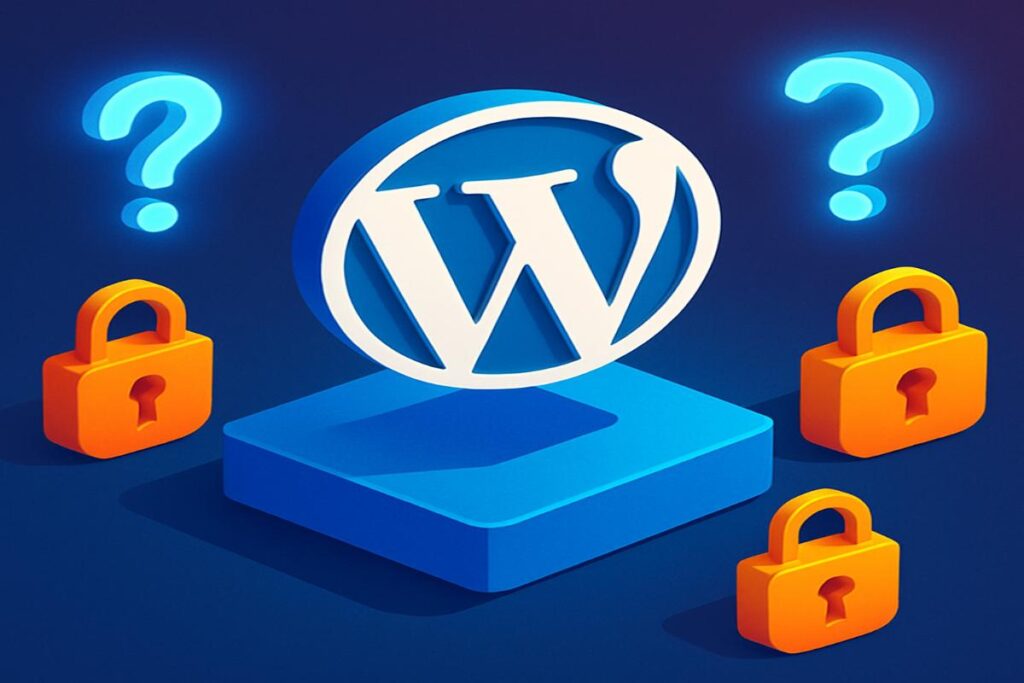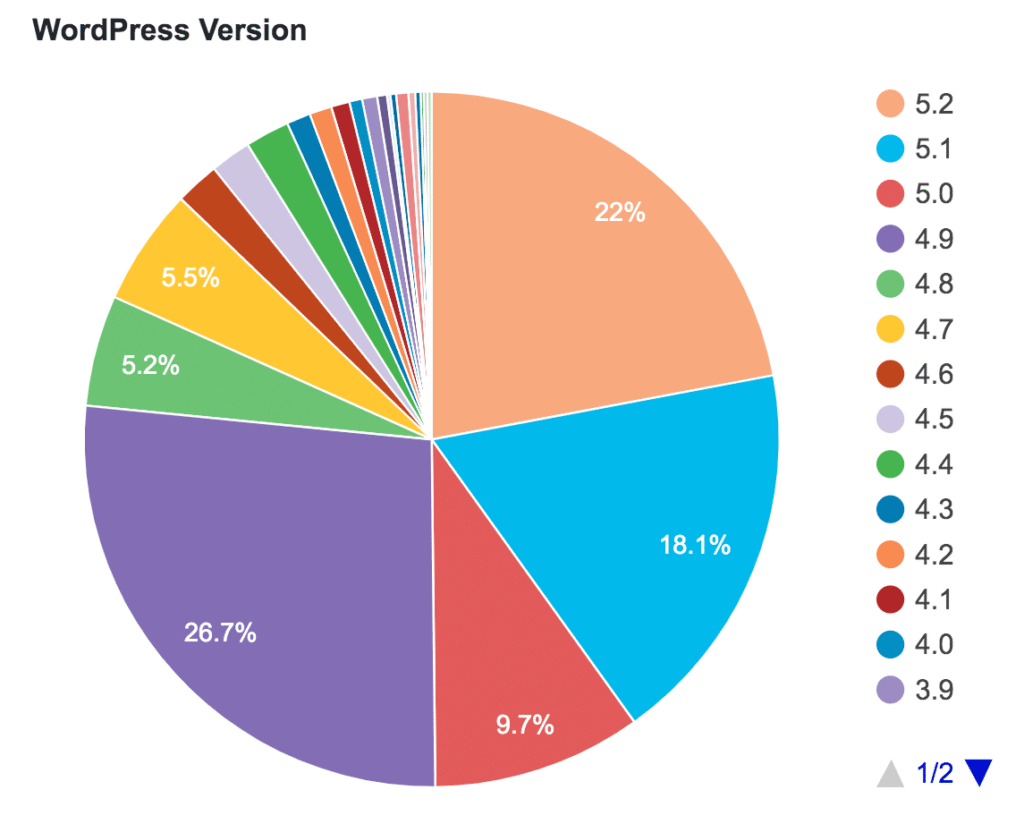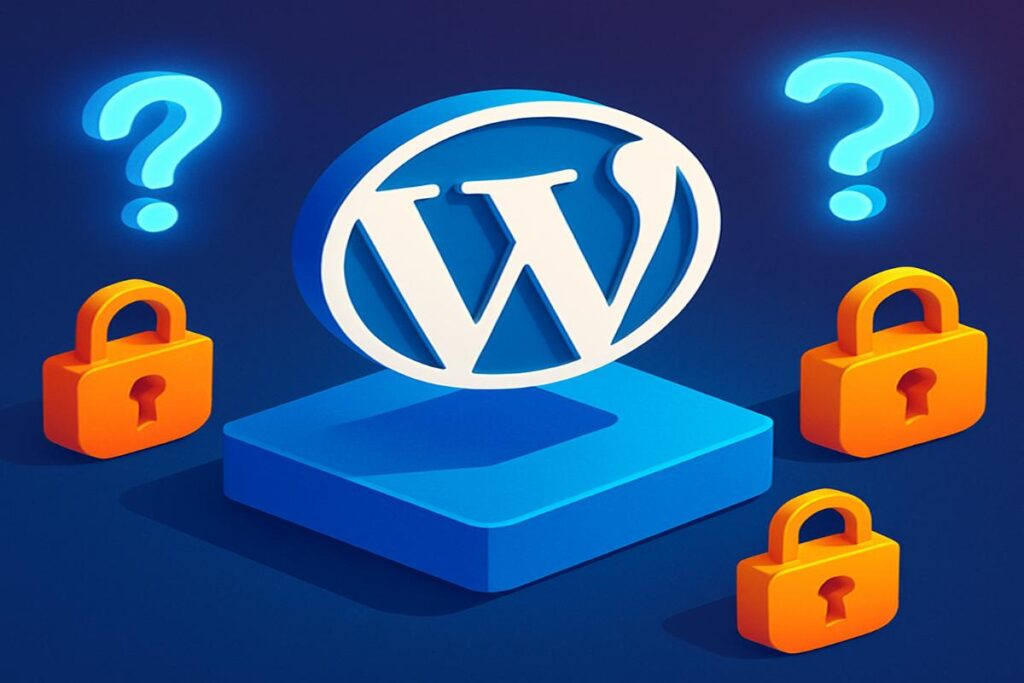
Introduction: Why “WordPress Security” Should Matter to You
Imagine logging into your WordPress dashboard tomorrow to find your homepage defaced, user data stolen, or traffic plummeting—all because of a single overlooked plugin. With 43.4% of all websites powered by WordPress, it’s a hacker’s favorite playground (WordPress.com). Yet many site owners still treat security as an afterthought—updating themes and plugins only when prompted, using weak passwords, or skipping backups altogether.
In this post, we’ll go beyond generic advice. You’ll learn about the real-world vulnerabilities attackers exploit in 2025, the tools and host environments that can shield your site, and even my personal tale of recovering from a brute‑force nightmare. By the end, you’ll have a clear roadmap to fortify your site and sleep soundly knowing your WordPress installation is battle‑tested.

Understanding the Attack Surface WordPress Security
Before we discuss solutions, let’s map out the common entry points attackers use:
- Outdated Core, Plugins & Themes
- Impact: Unpatched code in third‑party extensions is responsible for over 95% of WordPress compromises Sucuri Blog
- Impact: Unpatched code in third‑party extensions is responsible for over 95% of WordPress compromises Sucuri Blog
- Weak Login Credentials
- Impact: Brute‑force attacks target “admin” users with simple passwords, compromising sites in minutes.
- SQL Injection & Cross‑Site Scripting (XSS)
- Prevalence: SQL injections account for roughly 20.6% of reported flaws; XSS comprises over 53% of disclosed vulnerabilities DiginamiX
- Supply‑Chain Attacks
- Trend: Hackers have begun injecting backdoors directly into popular plugins or themes before they’re even published.
Comparison of Top Security Plugins in 2025
| Plugin | Free Tier | Key Features | Best For |
|---|---|---|---|
| Wordfence | ✓ | WAF, real‑time traffic, malware scanner | All users |
| iThemes Security | ✓ | Two‑factor auth, brute‑force safeguards, file change detection | Bloggers & SMEs |
| Sucuri Security | ✓ | Cloud‑based WAF, DDoS mitigation, blacklist monitoring | High‑traffic & enterprise |
| WPScan | ✓ | Vulnerability database, CLI scanner | Agencies & developers |
Table: Feature comparison of leading WordPress security plugins.
Deep Dive into Common Vulnerabilities
1. Outdated Plugins & Themes WordPress Security
Despite automatic update options, many site owners delay installing patches. In the first half of 2024 alone, Sucuri detected over 23,800 infected sites suffering DNS TXT record malware, a campaign that hijacks outdated plugins to inject redirects (Sucuri).
Solution:
- Enable automatic updates for minor patches.
- Audit your plugin list quarterly; remove anything unmaintained.
- Use a Web Application Firewall (WAF), like the one included with Sucuri or Cloudflare, to virtually patch known holes.
2. Weak Login Credentials & Brute‑Force
A staggering 22% of vulnerabilities require no authentication or just subscriber‑level access, making weak credentials a top‑risk factor (Jetpack). Attackers wield botnets to hammer wp-login.php with credential lists until they break in.
Solution:
- Enforce strong passwords via a plugin or your hosting provider.
- Implement two‑factor authentication (2FA) using Google Authenticator or Authy.
- Change the default login URL with a lightweight plugin like WPS Hide Login.
3. SQL Injection vs. XSS
- SQL Injection: Despite often flying under the radar, SQL injections represent over 20% of high‑risk flaws in WordPress extensions (DiginamiX).
- Cross‑Site Scripting (XSS): While 53% of vulnerabilities disclosed are XSS‑related, real‑world attacks show SQL injections more prevalent in blocked firewall attempts (Jetpack).
Solution:
- Always use well‑coded, vetted plugins and themes.
- Sanitize all user inputs in custom forms using WordPress’s built‑in functions (
esc_html(),sanitize_text_field(), etc.). - Deploy a WAF to catch malicious payloads before they reach your code.
Key Insights & Best Practices
- Choose a Secure Host
- Limit Plugin Usage
- Every plugin expands the attack surface. Conduct a monthly audit, deactivating and deleting unused extensions.
- Implement Continuous Monitoring
- Track file changes, login activity, and core integrity with plugins like WP Activity Log.
- Automate Backups
- Schedule daily backups using UpdraftPlus or your host’s built‑in tools—and store copies off‑site (e.g., Amazon S3).
- Educate Multi‑Author Teams
- Provide a brief security checklist for contributors, covering password hygiene, safe plugin usage, and recognizing phishing attempts.
Real‑World Recovery Story WordPress Security
In early 2021, one of my niche blogs was infected with a stealth redirect. Visitors saw gambling sites instead of my content—an SEO nightmare. Here’s how I bounced back:
- Isolate & Scan: Took the site offline and scanned all files with Wordfence.
- Clean & Restore: Restored a one‑week‑old backup and updated every plugin/theme.
- Harden & Protect: Enabled 2FA, installed a WAF, and migrated to a managed host offering free malware cleanup.
Today, that site enjoys zero downtime and 24/7 monitoring—proof that most breaches are preventable with the right tools and processes.
The SEO Impact of Security
- HTTPS as a Ranking Signal: Google confirms SSL is a lightweight ranking factor; sites without SSL risk lower visibility.
- Blacklist Avoidance: Malware‑infected sites often end up blacklisted by Google, losing up to 95% of organic traffic overnight.
- Performance & Core Web Vitals: Malicious scripts slow page loads, hurting your page experience scores.
Internal Link Suggestions
Beginner’s Guide to WordPress SEO in 2025
Investing in security is an investment in search visibility, user trust, and revenue.
Top WordPress Plugins to Boost Site Speed
How to Choose the Best Hosting for Your WordPress Site
Conclusion & Next Steps
WordPress security isn’t a “set and forget” task—it’s an ongoing commitment. By combining a secure host, essential plugins, strict update routines, and user education, you can reduce your risk from every angle.
🔐 Your Action Plan This Week:
- Audit and update all plugins/themes.
- Enable automatic minor core updates.
- Install a WAF and two‑factor authentication.
- Schedule automated, off‑site backups.
Call to Action
What’s the biggest security challenge you’ve faced on your WordPress site? Drop a comment below or share this post with fellow site owners. For more in‑depth guides and monthly security insights, subscribe to our newsletter and never miss an update!


